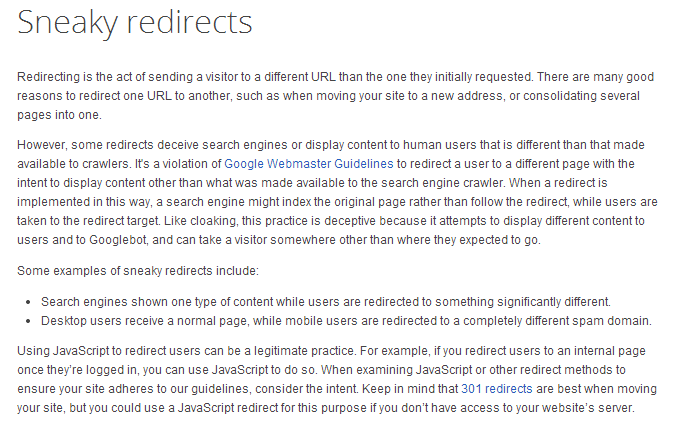Google announced that they have updated their Webmaster Guidelines covering sneaky redirects. In order to illustrate what cases are considered sneaky redirects, Google has added examples in their guidelines to serve as a baseline for webmasters. They’ve also updated their hacked content guidelines to include sneaky redirects on compromised sites.

The examples are:
- Search engines show one type of content while users are redirected to something significantly different.
- Desktop users receive a normal page, while mobile users are redirected to a completely different spam domain.
They also added a sentence about remembering the intent of a JavaScript redirect in the last paragraph of the page.
Meanwhile, in the Hacked Content guidelines, you’ll see the new item “Redirects” with the following definition:
Redirects
Hackers might inject malicious code to your website that redirects some users to harmful or spammy pages. The kind of redirect sometimes depends on referrer, user-agent, or device. For example, clicking a URL in Google search results could redirect you to a suspicious page, but there is no redirect when you visit the same URL directly from a browser.
The official announcement reminds users and webmasters of the action they will take against websites found to be in violation of these guidelines. “As with any violation of our quality guidelines, we may take manual action, including removal from our index, in order to maintain the quality of the search results,” the announcement says.
The good news for all our partners is that we make sure to monitor changes in these guidelines regularly to make sure your campaigns conform to the changes. Talk to your account manager today to learn about our process, or sign up now as our partner and request your website audit today.

